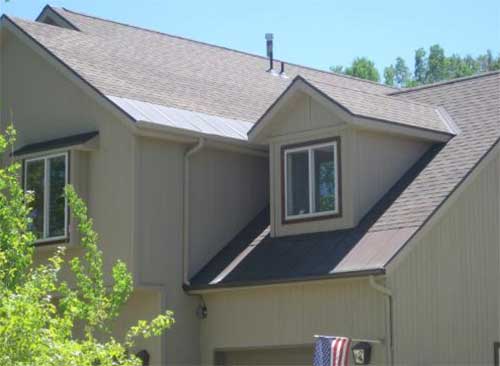Every homeowner knows how important a well-builtroof is to the integrity of their home. Many people do not pay much attention to the condition of their roof until there is obvious evidence of a leak. By the time a roofing problem becomes noticeable, there may already be considerable damage to the structure of their home. Water or moisture can enter the enclosed attic space and migrate into the interior wall structure where it will cause deterioration of the wooden structure that supports the roof and possibly result in the development of mold. Mold is a serious health threat and it can be difficult to eliminate once it is established. It is important for homeowners to inspect their roof at least annually to identify any signs of trouble.
Obvious Signs of Roofing Problems
Most people assume their roof is in good shape if their home is not leaking, but a leaky roof will quickly get their attention. Even if there is no noticeable water damage to the interior rooms of their home, the homeowner should still check their attic regularly for signs of water or moisture. A small leak may allow water to collect in the attic insulation for some time before it develops into a serious problem. If even a pinpoint of daylight can be seen through the roof, there is a serious problem with the roof that needs immediate attention.
Shingles That Are Curling

Image courtesy of ontoproofing.net
Shingles made of asphalt is the most common roofing material with an average lifespan of 20 to 25 years, assuming a high grade of shingles was used as the first layer over the roof boards. Adding a new layer of shingles over an existing layer that is failing will shorten the life of the new roof by at least a few years. Asphalt shingles protect against water damage because the tar on their underside seals to the shingle layer beneath it. When they begin to curl or buckle the seal is compromised, so this is a warning sign that it is time to replace the roof.
Missing Shingles
Storms that produce heavy winds and rain can lift and damage shingles that are beginning to loosen, and the shingles can often be torn off completely. Hail can be especially destructive to roofing, so it is important to carefully inspect the roof after a storm that produces damaging hail. Another reason for missing shingles is ice damage to valley areas of the roof. Shingles that are missing due to this type of damage does not necessarily mean that the entire roof should be replaced, but a qualified roofing contractor should be called to inspect the roof and make any necessary repairs. Another area that needs special attention is around the base of any chimneys if there is no metal flashing in place.
Less Noticeable Signs of Failing Shingles
The homeowner should look for signs that the shingles on his roof are losing their protective layer of granules. A buildup of granules in the gutters and downspouts after a heavy rain is a warning sign that the singles are nearing the end of their life expectancy. Sun or shade exposure can affect the life of shingles considerably. When the roof is exposed primarily to sunlight, shingles are likely to deteriorate faster due to the excessive heat. A roof that is shaded so much that sunlight never reaches it can also be compromised by too much moisture, so mold and moss can often be seen growing on a shaded roof.
Choosing the Best Roofing Material
Roofing materials may not be the first concern in the mind of someone who is building a new home, but choosing a roof that will protect their home for many years is a wise decision. Asphalt shingles have been the most commonly used roofing for many years, but many people are choosing metal roofing that is available in steel, alloy strips, aluminum or copper. The advantages of metal are that it is lighter in weight and has approximately twice the lifespan of asphalt shingles. It is now available in styles that mimic the look of slate or asphalt shingles, although the cost is considerably higher.
Whether the property is a new construction or an existing home that needs a new roof, the homeowner should take into consideration how many years he expects to life there. Since a metal roof can last a lifetime, the additional cost may be a worthwhile investment.